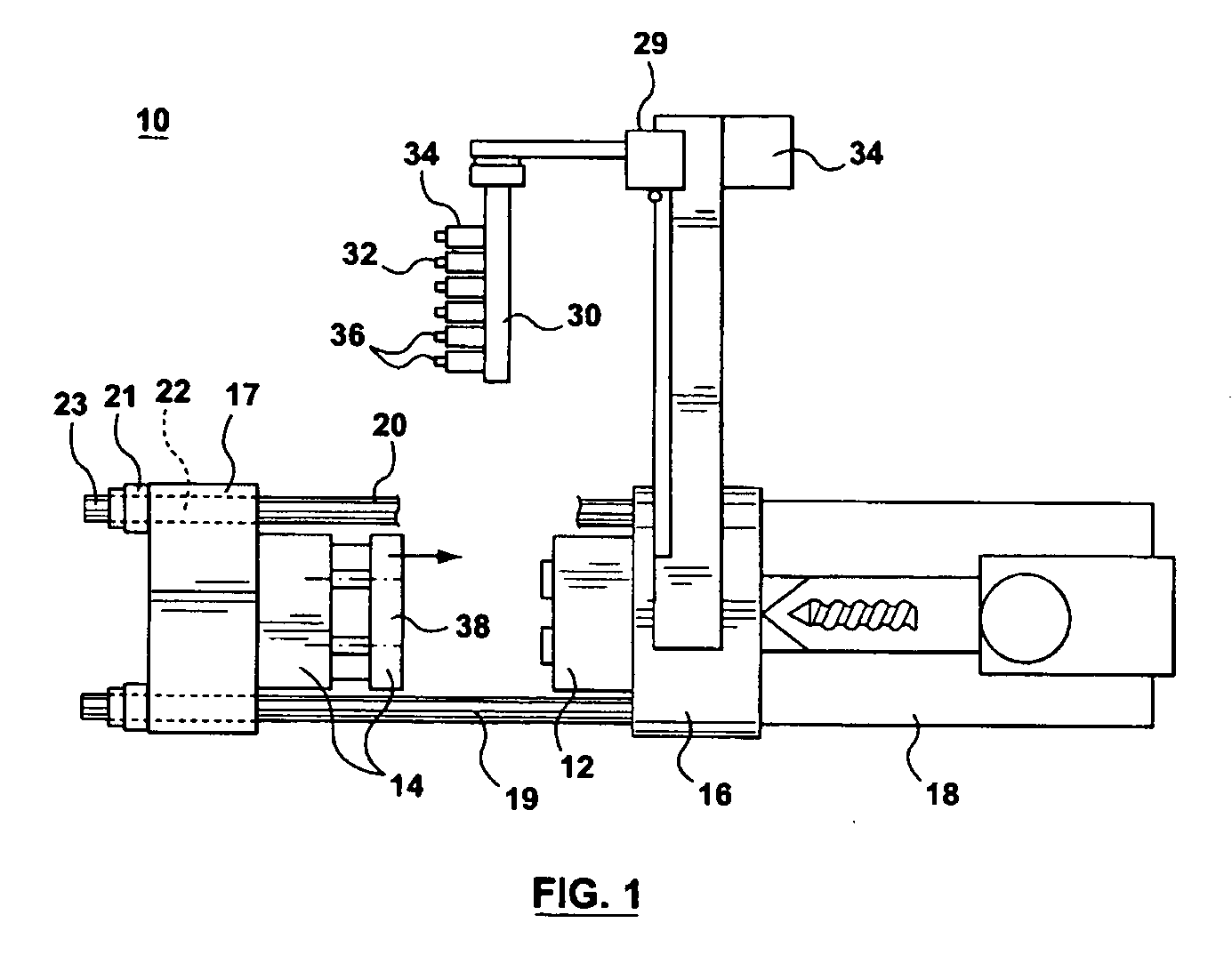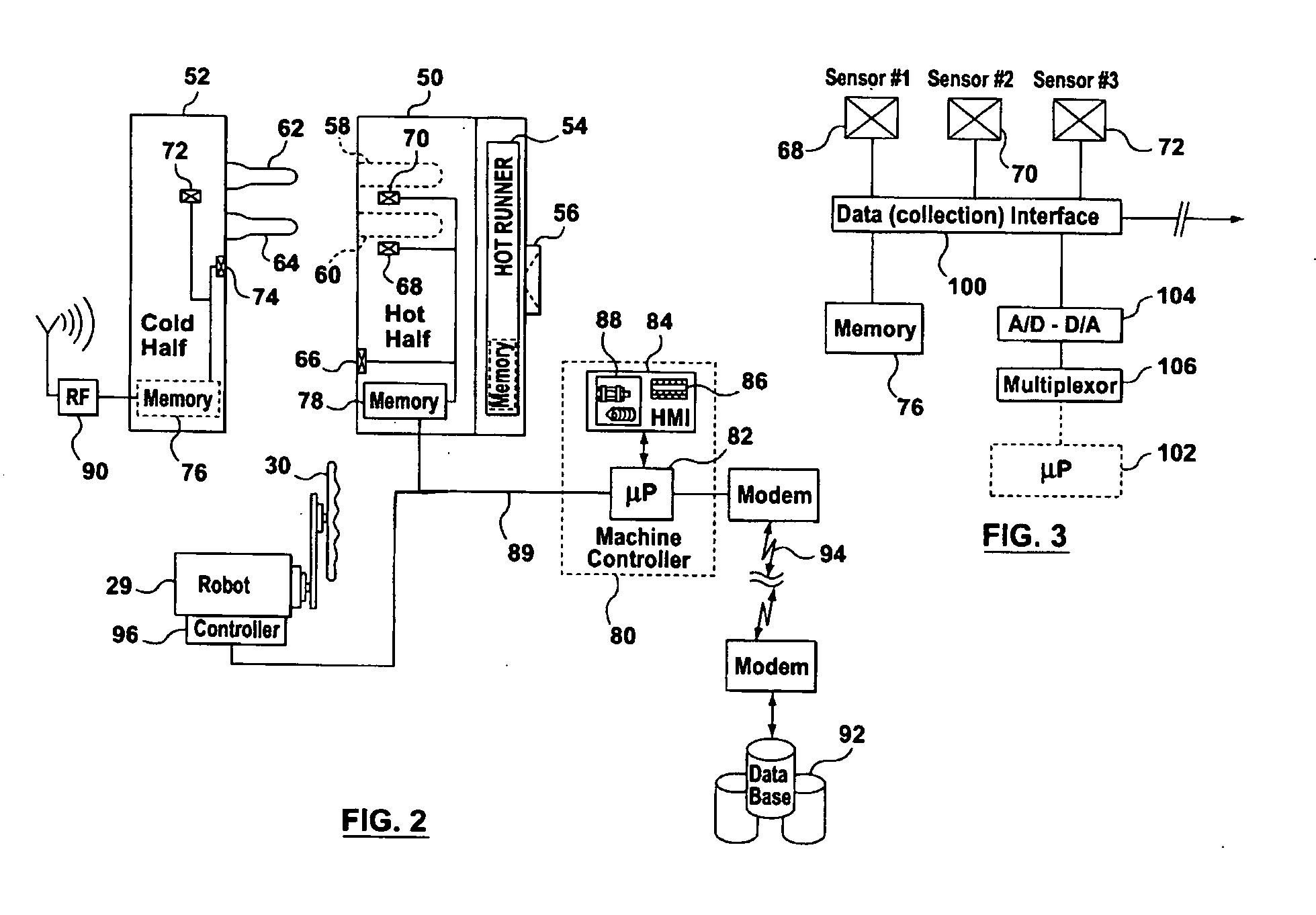Intelligent molding environment and method of configuring a molding system
a molding system and intelligent technology, applied in the field of intelligent molding environment and method of configuring a molding system, can solve the problems of high probability of system variation difficult to achieve optimization and set-up on the test rig, and difficult to achieve the effect of reducing system complexities, improving operational control, and simplifying the setup and operation of the injection molding machin
- Summary
- Abstract
- Description
- Claims
- Application Information
AI Technical Summary
Benefits of technology
Problems solved by technology
Method used
Image
Examples
Embodiment Construction
[0034]FIG. 1 shows a typical injection molding machine 10 that can be adaptable to support the control processing intelligence of the present invention. As will be understood, during each injection cycle, the molding machine 10 produces a number of plastic parts corresponding to a mold cavity or cavities defined by complementary mold halves 12, 14 located within the machine 10. Overall operational control of the molding machine is accomplished through use of a machine controller which may be realized by an architecture having distributed intelligence, i.e. multiple interconnected processors that are responsible for the control of individual parts of the molding system. The machine controller is operationally responsible for a human machine interface (shown in FIG. 2) that allows graphical representation of the machine's present or historic status, as well as the entry of information through a touch-screen, keyboard, readable data device (such as a disk drive or CD-ROM) and the like....
PUM
| Property | Measurement | Unit |
|---|---|---|
| temperature | aaaaa | aaaaa |
| temperature | aaaaa | aaaaa |
| thicknesses | aaaaa | aaaaa |
Abstract
Description
Claims
Application Information
 Login to View More
Login to View More - R&D
- Intellectual Property
- Life Sciences
- Materials
- Tech Scout
- Unparalleled Data Quality
- Higher Quality Content
- 60% Fewer Hallucinations
Browse by: Latest US Patents, China's latest patents, Technical Efficacy Thesaurus, Application Domain, Technology Topic, Popular Technical Reports.
© 2025 PatSnap. All rights reserved.Legal|Privacy policy|Modern Slavery Act Transparency Statement|Sitemap|About US| Contact US: help@patsnap.com



